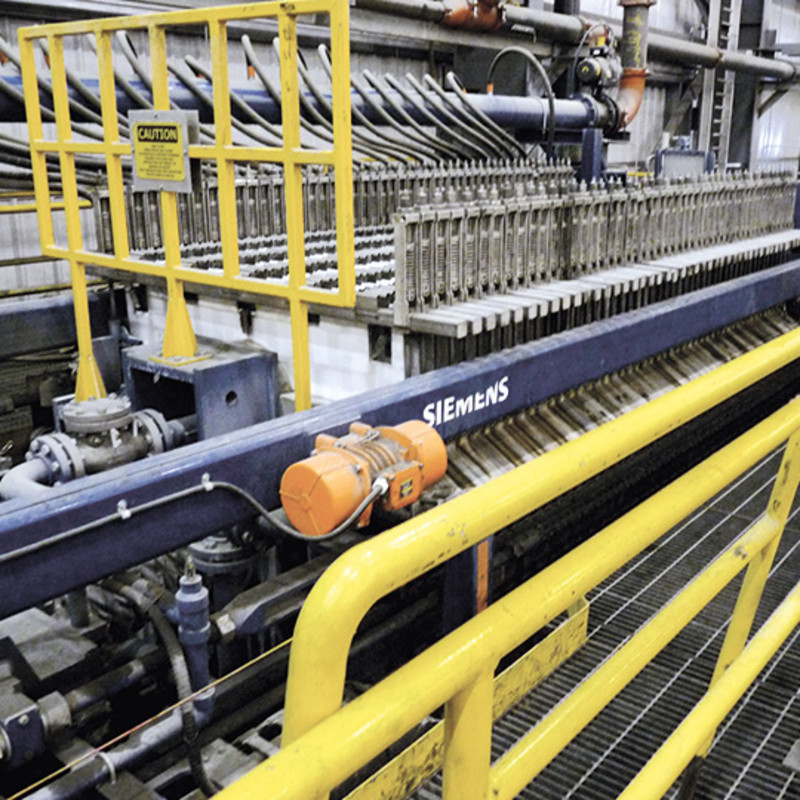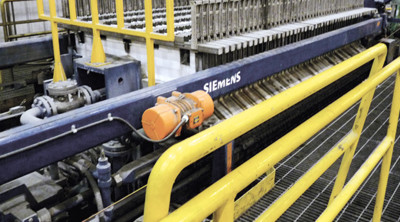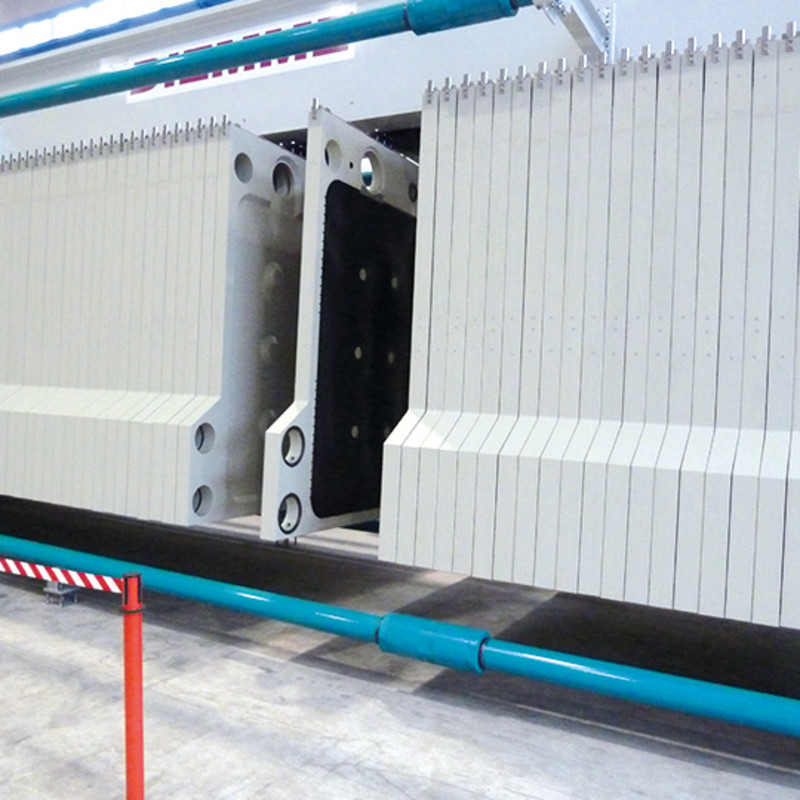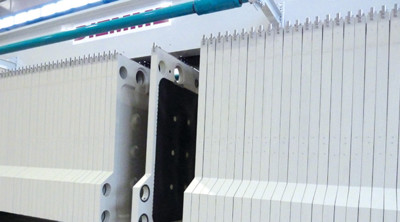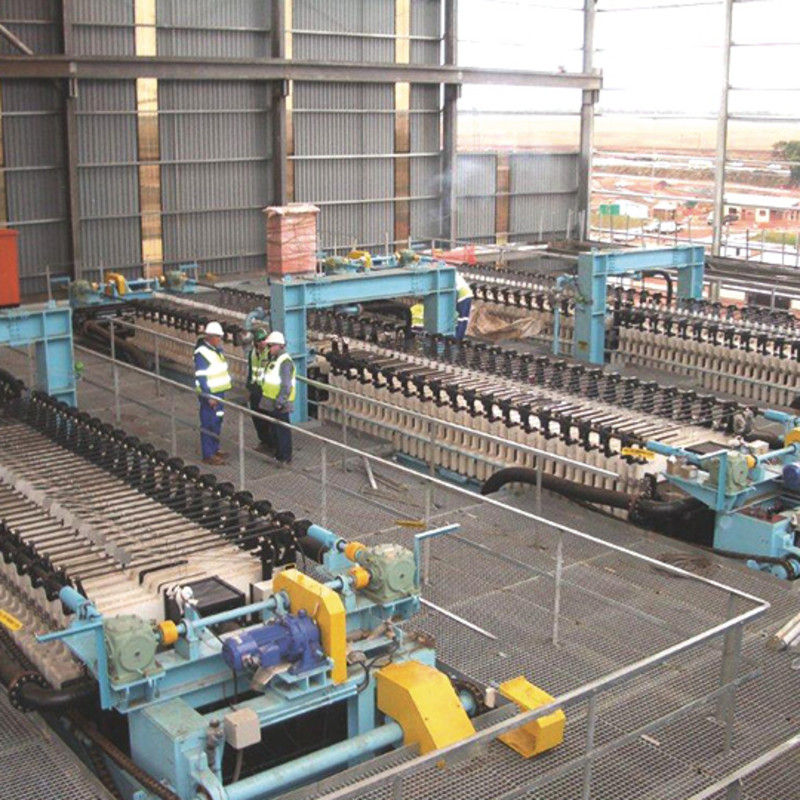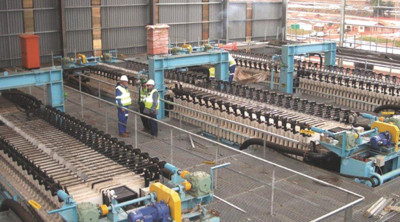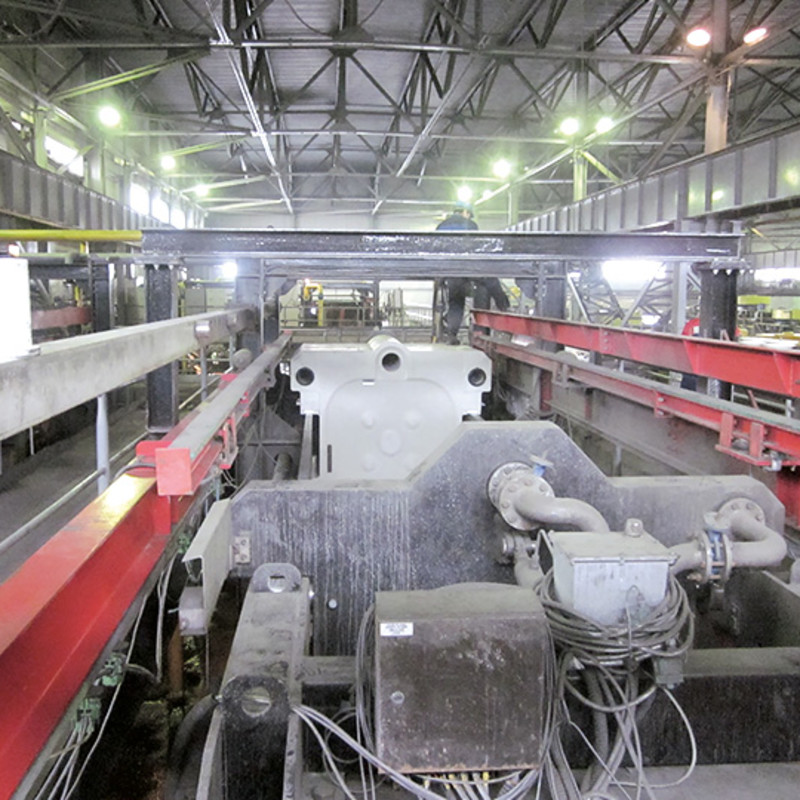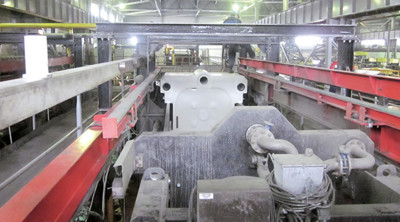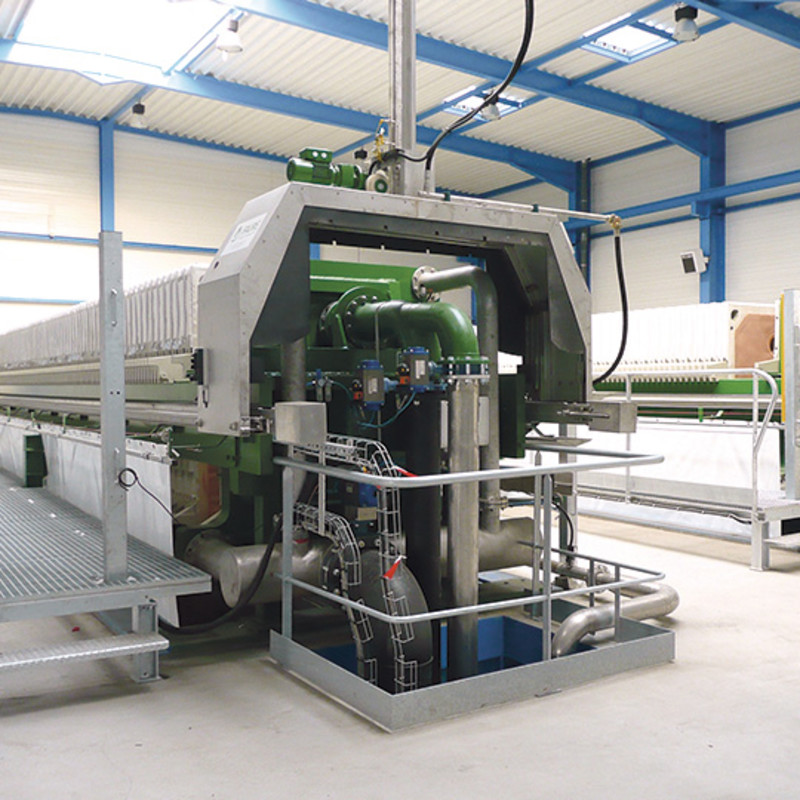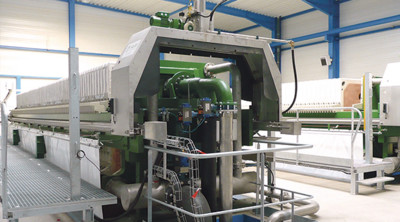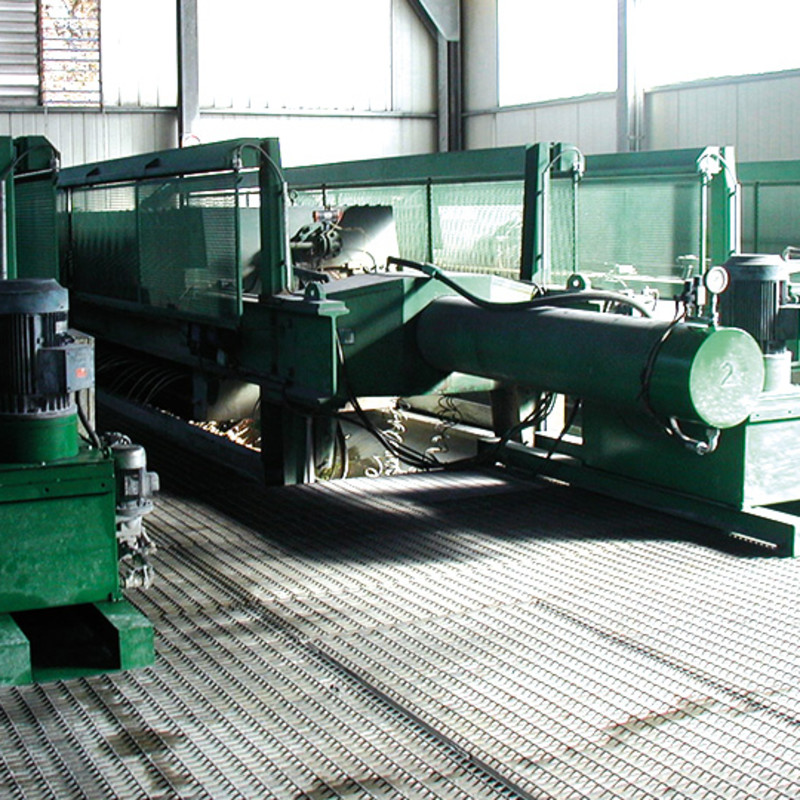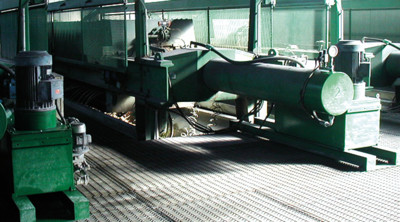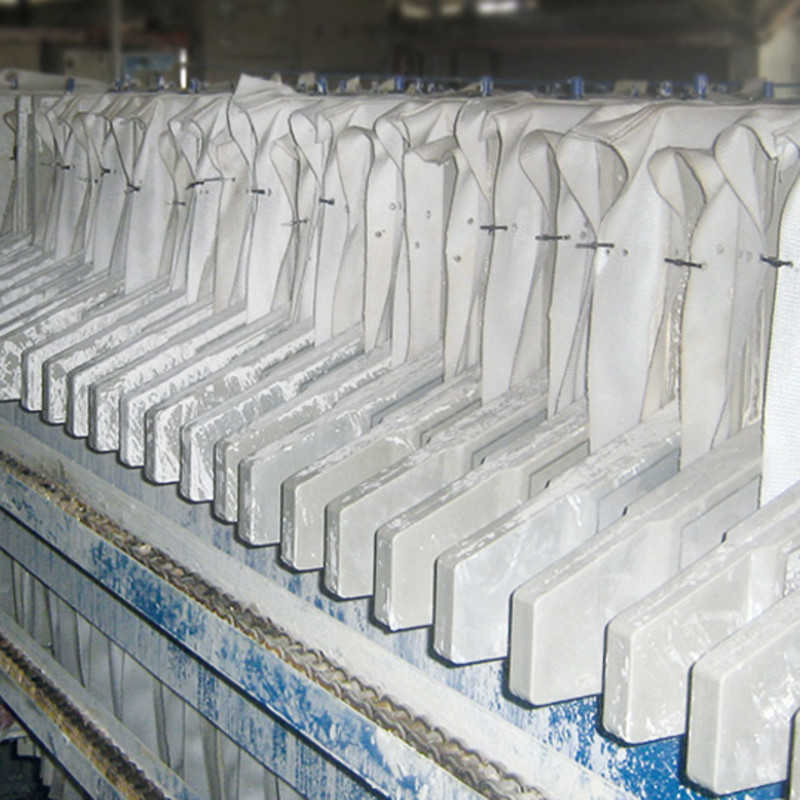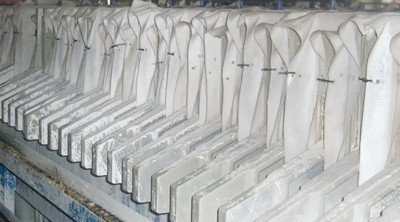Copper ore concentrate
A flotation process separates ground copper ore from its mineral by-products. The size of the ore particles requires the use of chamber filter plates and squeezing using membrane filter plates. Residual water in the filter cake is easily extracted in a subsequent blow drying procedure. The filter elements are therefore equipped with replaceable inserts at the filtrate drainage outlets. Filter cloths are then protected and their service lives extended.


